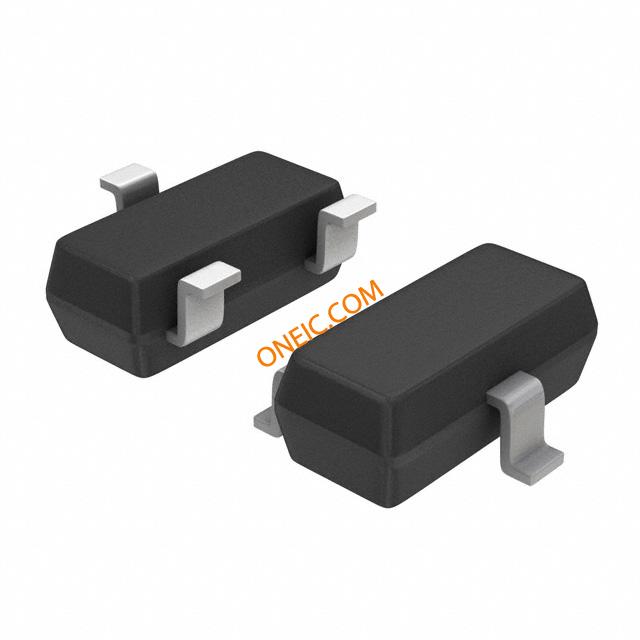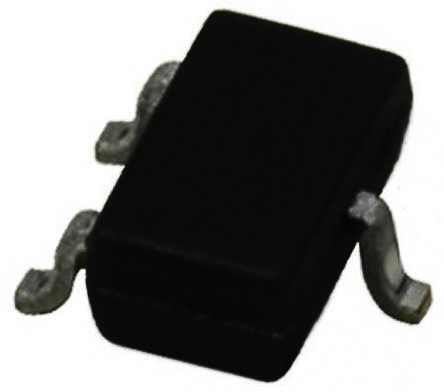2SA1179N
PNP bipolar transistors for switching, 0.15A, 50V, SOT-23 package
Manufacturer: onsemi
series introduction
# Introduction to the 2SA1179N Product Series
## 1. Overview
The 2SA1179N is a significant product series within the realm of semiconductor devices, specifically belonging to the category of bipolar junction transistors (BJTs). BJTs are fundamental building blocks in electronic circuits, and the 2SA1179N series offers unique characteristics and performance features that make it suitable for a wide range of applications.
## 2. Key Specifications
### Electrical Characteristics
- **Collector - Base Voltage (VCBO)**: The 2SA1179N typically has a specified collector - base voltage rating. This parameter indicates the maximum voltage that can be applied between the collector and the base terminals without causing breakdown. A relatively high VCBO rating allows the transistor to operate in circuits with higher supply voltages, providing flexibility in different power - level applications.
- **Collector - Emitter Voltage (VCEO)**: It represents the maximum voltage that can be applied between the collector and the emitter terminals. This rating is crucial as it determines the safe operating voltage range for the transistor in common - emitter configurations, which are widely used in amplifier and switching circuits.
- **Emitter - Base Voltage (VEBO)**: This is the maximum voltage that can be applied between the emitter and the base terminals. A proper understanding of VEBO is essential to prevent damage to the transistor due to over - voltage conditions at the base - emitter junction.
- **Collector Current (IC)**: The 2SA1179N is designed to handle a certain maximum collector current. This parameter is important as it determines the amount of current that can flow through the collector terminal, which in turn affects the power - handling capability and the ability of the transistor to drive loads in a circuit.
- **DC Current Gain (hFE)**: The DC current gain is a measure of the transistor's ability to amplify the base current. A high hFE value means that a small base current can control a relatively large collector current, making the transistor more efficient in amplification applications. The 2SA1179N has a specified range of hFE values, which can vary depending on the operating conditions such as collector current and temperature.
### Thermal Characteristics
- **Power Dissipation (PD)**: This parameter indicates the maximum amount of power that the transistor can dissipate without exceeding its maximum operating temperature. The 2SA1179N has a defined power dissipation rating, and proper heat - sinking techniques may be required in high - power applications to ensure that the transistor operates within its safe temperature range.
- **Junction Temperature (TJ)**: The junction temperature is the temperature at the semiconductor junction within the transistor. The 2SA1179N has a maximum junction temperature rating, and exceeding this temperature can lead to reduced performance, reliability issues, and even permanent damage to the device.
## 3. Package Type
The 2SA1179N is available in a specific package type. The package not only provides mechanical protection for the semiconductor die but also plays a crucial role in heat dissipation and electrical connection. Common package types for this series may include through - hole packages such as TO - 92, which are widely used in prototyping and traditional printed circuit board (PCB) designs. The TO - 92 package has three leads (collector, base, and emitter) that are easy to solder onto a PCB, making it accessible for hobbyists and professional engineers alike.
## 4. Applications
### Audio Amplification
- In audio amplifier circuits, the 2SA1179N can be used as a small - signal amplifier. Its relatively high DC current gain allows it to amplify weak audio signals from sources such as microphones or pre - amplifiers. By properly biasing the transistor in a common - emitter configuration, it can provide
Images for reference

SOT-23-3_527AG

Image Preview